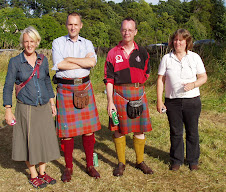The current passage of the Princess border is very slightly asymmetrical – nothing the human eye could detect, but there’s one stitch difference between one side of each motif and the other, because the “feathers” are currently being worked over an even number of stitches instead of an odd one as previously, and that creates a discrepancy to either side. It means that the knitter has to be constantly aware of which direction we’re going in, here. When the motifs are perfectly symmetrical, direction doesn’t matter except for a couple of stitches at each end.
It’ll be good practice for the end bit of the border pattern, when “sprouting seeds” nod inward towards the centre. At that point, the entire border will be perfectly symmetrical but the individual motifs won’t be.
I’m just telling you.
Alexander’s Fair Isle
This gets a bit technical.
Many years ago, I happened upon a passage in Odham’s Encyclopedia of Knitting
(no date – probably early 50’s) in which James Norbury asserts: “The second type of Shetland design is worked in an all-over patterning. Any number of colours can be used, but these are graded, and the colours used in sequence. This twelve-row colour sequence [an example is given] is followed throughout the pattern. Thus, if there are 15 pattern rows the colour sequence will change as the patterning proceeds.”
I might add that I have never seen such a statement in any other book.
I hit upon this passage in the late 60’s, and seized the idea with delight. I have used it many times, choosing, say, six background colours and seven foreground ones and letting rip, with the colours changing in relation to each other as well as to the pattern. I have decided with Alexander’s forthcoming Fair Isle to revert to the more traditional and severe system, and relate the colours to the pattern.
That is a picture of Alexander himself wearing such a sweater, a quarter of a century ago.
I was interested to read the source passage again. It would be fun to try the idea in the more restrained way in which Norbury actually gives it – which I had forgotten – and have the colour changes repeat over 12 rows while the pattern repeats over somewhat more.
A once-famous designer (whom I won’t name) once used this idea, deriving it from the same book. I know she did, because the all-over stitch pattern she used is on the same page of Odham’s Encyclopedia as the passage just quoted. Maybe I’ll try to dig out her pattern today and see how many colours she used, and how the sequence repeats. My way, or Norbury’s? Would I dare show the illustration? Let’s see if I can find it, first.
Comments
No room for much more. Emily, you’re right that I must stop faffing about on this Kitchener stitch thing, and write to Kim Salazar, to the Canadian Red Cross, to the British Red Cross (my husband’s suggestion, and a good one) and to the OED, and get the show on the road.
Beverly, my road to lace knitting sounds just like yours, starting with Shetland jumper weight and a hap shawl. More on this subject soon, perhaps, when space allows.



No comments:
Post a Comment